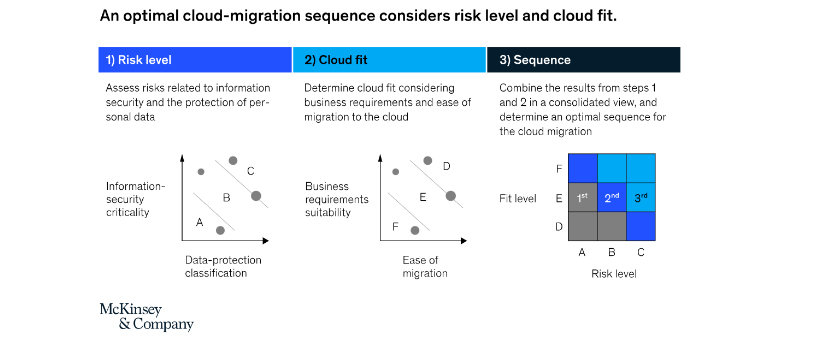- On Sep 28, 2023 10:13:38 AM
- by: Rick Topping
- 6 minutes Read
Most organizations will agree that digital transformation is an essential part of modern business. But having the right technologies in place is not only about supporting daily operations. It’s also about supporting employees by providing them with the tools and technologies they need to be effective!
With this in mind, determining the next steps in their digital transformation journey requires looking at what has changed in the way of working. While many employees have returned to the office,remote or hybrid work is still popular. Whether organizations have a hybrid or fully remote working policy, employees need secure and reliable access to company systems wherever they’re working.
This is just one of the reasons why the cloud and digital transformation are becoming synonymous with agile working. Additionally, aGartner report predicted that end user cloud spending would continue to grow by more than 20%. This is largely being driven by hybrid and remote working.
“Emerging technologies that help businesses interact more closely and in real time with their customers, such as chatbots and digital twins, are reliant upon cloud infrastructure and platform services to meet growing demands for compute and storage power.
-Sid Nag, Vice President Analyst at Gartner
In this article we dive into why there’s such a strong focus on the cloud as a digital transformation strategy. Specifically, we will explore how the cloud supportsemployee experience, client experience, innovation, and growth.
Why Are The Cloud and Digital Transformation Linked?
One of the ongoing challenges organizations have with technology investments is how rapidly tech evolves. No sooner are systems deployed than newer applications or hardware is released, promising further enhancements. It’s a frustrating situation to be in. Both for the leaders trying to gain a competitive advantage, and for employees stuck working with older systems when they know better technologies exist.
Traditional on-site systems, in particular, are prone to obsolescence. As much as organizations try to plan for future growth and changing needs, this is hard to predict. Cloud systems have the advantage of being more agile. It’s much easier to scale up or cut back on cloud-based services than it is with on-site hardware.
This is especially valuable when organizations encounter unexpected roadblocks on their path to growth. Being stuck with the redundancy of tech equipment that’s not being used and can’t easily be disposed of only adds to the challenges being experienced. By contrast, operating in the cloud provides organizations with flexibility that can help them continually streamline their operations.
Only using the tech resources they need helps organizations remain competitive, even in a challenging or uncertain industry.
Analysts agree thatthe cloud is a key element to digital transformation and advancement, and that there’s no more time to delay on adoption. But be careful about how you adopt new technology. It's as much about people as it is about process.
Cloud Adoption and the Digital Employee Experience
Part of remaining competitive and agile is the ability to retain top employees. In terms of technology, this means adopting a digital transformation strategy that empowers employees and facilitates moreefficient ways of working. Determining what this looks like and what technologies will meet these needs is the next challenge.
At a round table earlier in the year, we chatted to business leaders in Pittsburgh aboutleading digital experience trends and how these are influencing their digital transformation strategies. The three top takeaways were:
1) The employee experience must remain the TOP priority
How new technology is rolled out directly impacts theemployee experience. If there are mistakes causing downtime, or employees aren’t properly trained on how to use it, adoption will not be as successful. Equally having systems that focus on thedigital client experience without considering the impact to employees are less likely to succeed.
By contrast when employees are sold on new technologies, they become digital transformation ambassadors, helping to pass on the benefits even to clients!
2) Retaining employees in a hybrid work environment requires a different approach
Flexible or remote working needs to be supported by agile systems.Cloud services and technologies can be very effective in supporting flexible working, enabling employees to access systems from wherever they choose to work. When systems are deployed, employee expectations should be taken into consideration.
3) Help employees keep up with technology advancements
Even for the most tech savvy employees, the pace at which technology is evolving can be intimidating. This is why ongoing training and active employee engagement needs to be part of any digital transformation strategy. This demonstrates to employees that they are valued. They’re more likely to buy into technology changes if they’re not threatened or overwhelmed by them. This mindset also encourages innovation and supports growth.
Are You Ready to Leverage the Cloud and Digital Transformation?
With a growing need to be more agile in an ever changing world, analysts believe that acloud ecosystem, starting with migrating all your data to a central cloud hub, is the ideal way to achieve this.
 McKinsey’s systematic three-step approach to sequencing their cloud rollout.
McKinsey’s systematic three-step approach to sequencing their cloud rollout.
Additionally,modernizing the way of working has become particularly important to professional service companies and even nonprofits. For example, Animal Friends in Pittsburgh recently created a modernIT intranet called “FETCH!”.
But for businesses, it’s critical to engage employees in the digital transformation process. Cloud technology empowers employees to be able to work from anywhere, enabling them to become more effective. If this is further supported by routine training, leaders can really set their teams up for success.
This environment creates an outward looking mindset, where employees are trained to find solutions faster than ever before. They have the confidence to do this because the right systems are in place to help them deliver the services they need to, no matter where they’re working.
So much emphasis is placed on how leveraging technology leads to growth and innovation. This is true, but technology rarely achieves this on its own. There’s an abundance of technologies and cloud native applications promising benefits to organizations. Finding the right technology requires understanding its purpose and how it’ll align with your organization’s needs.
Getting buy-in at every level, having leadership that understands it’s as much about people as it is about process, that’s when it leads to a competitive advantage. The most successfully merged cloud and digital transformation process is one that is primarily focused on supporting employees and clients.
With that in place, growth is more easily achieved, leading to the competitive advantage that every organization desires.
If you need help navigating your cloud technology needs and determining how to go about digital adoption or migration, learn more abouthow we can help!
Subscribe blog for latest updates
By submitting this you will be receiving our latest updates on post.
